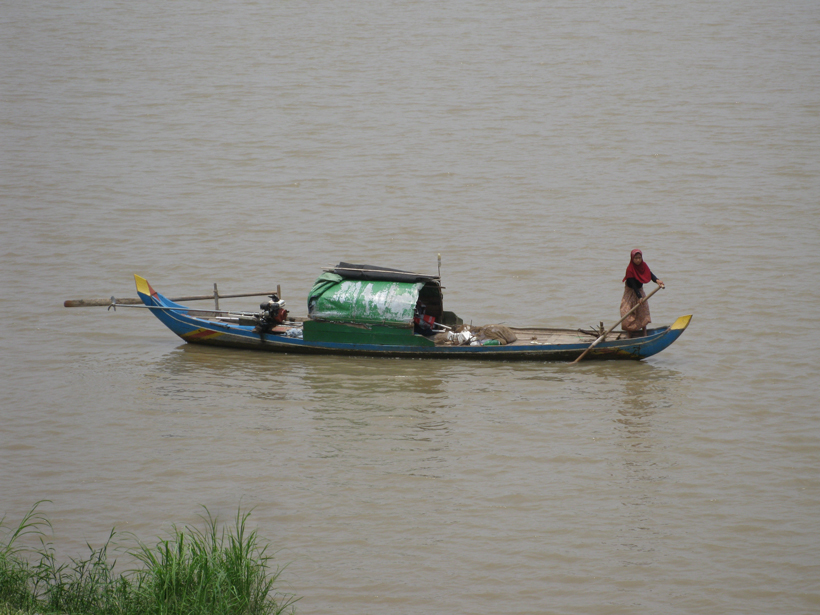More than 60 million people depend on fish drawn from the Mekong River. A waterway that flows from the Tibetan Plateau to the Vietnam Delta, passing through China, Myanmar, Thailand, Laos, and Cambodia, the river is crucial to the economies and livelihoods of millions. It’s also a biodiversity hotspot, home to roughly 23,000 plant and animal species, some found nowhere else.
The Mekong River basin is also one of the most quickly developing watersheds in the world: There are at least 134 dams in various stages of planning and development on the lower stretches of the river alone. The potential for hydroelectric generation in countries affected by high rates of poverty is enticing, yet these gains could easily be lost if damming the river hurts the crucial fisheries.
Using a sediment flow model tuned for the Mekong River, Wild and Loucks found that, depending on how they are constructed and managed, dams in the Sre Pok, Se San, and Se Kong sub-basins of the Mekong could reduce sediment flows in these tributaries by anywhere from 40% to 80%. Sediment affects the river’s physical behavior and shape, and nutrients sustain the downstream ecosystem.
Based on their calculations, the authors found that in most cases the amount of sediment trapped by the dams wouldn’t be enough to significantly degrade their hydroelectric generation potential. The trapped sediment could be enough. However, to have serious consequences on downstream ecosystems. The impetus to redesign the proposed dams to be more amenable to sediment flow or to budget for sediment management programs, the authors say, will thus come down to prioritizing long-term ecosystem health, food security, and biodiversity over short-term economic gains. (Water Resources Research, doi:10.1002/2014WR015457, 2014)
—Colin Schultz, Writer
Citation: Schultz, C. (2014), Mekong River dams could bring future food security woes, Eos, 95, doi:10.1029/2014EO021413. Published on 31 December 2014.
Text © 2014. The authors. CC BY-NC 3.0
Except where otherwise noted, images are subject to copyright. Any reuse without express permission from the copyright owner is prohibited.

